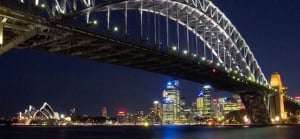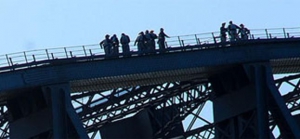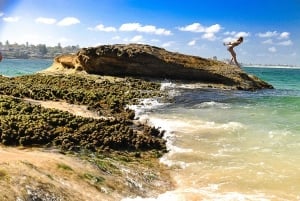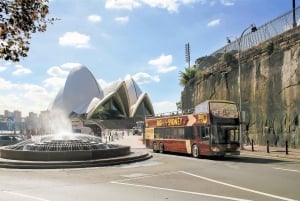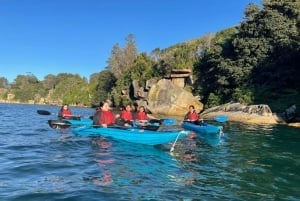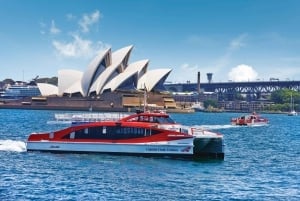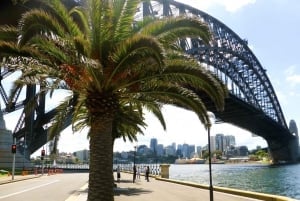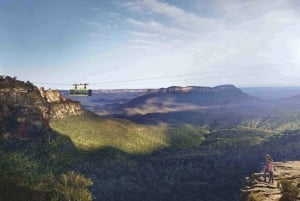Sydney Harbour Bridge
The Sydney Harbour Bridge Climb has become popular with travellers as a way to soak up the intoxicating 360 degree view. Clad in overalls and a harness, the climb is open to anyone over 12 years old, fit enough to walk the incline and able to handle the height. Not for the faint hearted, at its highest point, the arch is 134m above sea level and 1150m long.
Less challenging, but still some 200 steps high, is a second look out. The SE pylon of the bridge (accessed from Cumberland Street, The Rocks) offers spectacular views of the Sydney Harbour and an exhibition about the construction and history of the bridge.
If heights aren’t your thing, the good news is there are plenty of less extreme ways of soaking in the view. For the best view of The Sydney Harbour Bridge, hotels like the Park Hyatt, Quay Grand Suites Sydney, Shangri-La Hotel Sydney and the Sebel Pier One Sydney offer unequal picture perfect snapshots of the architectural dream.
The Habour Bridge
Although it took eight years in the making, the was well worth the wait. The bridge serves as a linkage between the city and North Sydney, with eight lanes of road traffic and two railway tracks. Built in 1932 with 58 000 tons of steels, architects designed the bridge from each end, meeting in the middle. Sydney Harbour Bridge is the fourth longest spanning arch bridge in the world.
Building the architectural wonderment was an engineering feat of massive proportions and 16 people tragically lose their lives in the construction process. Also a controversial matter was the hundreds of families who were evicted for the construction of the bridge, given no compensation. This history is often forgotten with the bridge now representing as a major Australian iconic figure and is affectionately known to many as ‘the Coathanger’. The bridge contains 6 million hand driven rivets and while the pylons give the appearance they are supporting the bridge, they are purely aesthetic. The 503m span was built simultaneously from both ends of the shore, with 12m of sandstone foundation sunk on either side.


